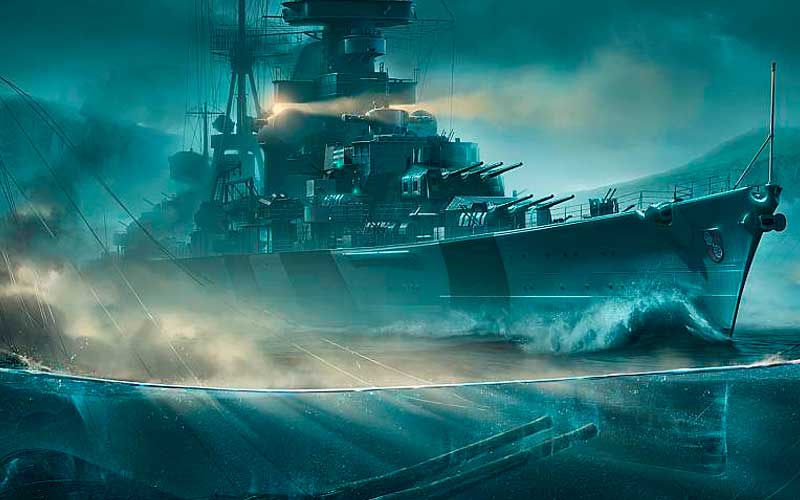How to Play the Carrier Class: A Complete Guide to Aircraft Management

How to Play the Carrier Class: A Complete Guide to Aircraft Management
Aircraft carriers are one of the most unique and strategic ship classes in World of Warships. Unlike other vessels, carriers rely on squadrons of aircraft to control the battlefield, scout enemies, and deliver devastating attacks from a distance. Mastering the carrier class requires a deep understanding of aircraft management, positioning, and team coordination. In this guide, we’ll break down everything you need to know to become an effective carrier captain.
The Role of Aircraft Carriers in Battle
Carriers play a critical role in naval warfare by providing air superiority, reconnaissance, and long-range strikes. They excel at controlling key areas of the map, supporting teammates, and disrupting enemy operations. However, their fragility and reliance on squadron management make them challenging to master.
- Air Superiority: Use fighter squadrons to neutralize enemy aircraft and protect your team.
- Reconnaissance: Deploy scout planes to spot enemies and provide valuable intel to your team.
- Offensive Strikes: Launch dive bombers and torpedo bombers to deal significant damage to enemy ships.
For more tips on maximizing your impact as a carrier, check out our guide on maximizing XP gains.
Tip: British carriers are beginner-friendly due to their rocket-based squadrons, which are easier to aim and deal consistent damage.
Understanding Aircraft Types and Their Roles
Each type of aircraft in your carrier’s arsenal serves a specific purpose. Understanding their strengths and limitations is essential for effective management:
- Fighters: Engage enemy aircraft to establish air superiority and protect your bombers.
- Dive Bombers: Deliver high-damage bombs with precision, ideal for targeting heavily armored ships like battleships.
- Torpedo Bombers: Launch torpedoes to cripple or sink enemy ships, especially vulnerable targets like destroyers.
- Scout Planes: Spot enemies, extend your vision range, and provide critical information to your team.
Balancing these aircraft types effectively ensures you can adapt to different situations and support your team.

Effective Aircraft Management Strategies
Managing your squadrons efficiently is the key to success as a carrier captain. Here are some strategies to optimize your aircraft usage:
- Prioritize Air Superiority: Always deploy fighters to counter enemy aircraft before focusing on offensive strikes. Losing air superiority leaves your bombers vulnerable.
- Focus on High-Value Targets: Target enemy carriers, destroyers, and damaged ships first to disrupt their operations and reduce threats to your team.
- Use Scouts Effectively: Scout ahead to locate enemies and identify weak spots in their formation. Share this information with your team to coordinate attacks.
- Manage Squadron Health: Avoid overcommitting squadrons to prolonged engagements. Withdraw damaged squadrons to preserve their strength for future attacks.
By mastering these strategies, you’ll maximize the effectiveness of your aircraft and contribute meaningfully to your team’s success. For advanced carrier tactics, explore our guide on ranked battles strategies.
Positioning and Map Awareness
Proper positioning is crucial for carriers due to their fragility and reliance on long-range attacks. Here’s how to stay safe while maintaining control of the battlefield:
- Stay Behind Cover: Use islands and terrain to break line of sight with enemy ships, reducing the risk of being targeted.
- Maintain Distance: Keep a safe distance from enemies to avoid torpedoes, airstrikes, and artillery fire.
- Monitor Enemy Movements: Regularly check the minimap to track enemy positions and anticipate threats.
- Support Your Team Safely: Position yourself near friendly ships to provide cover while staying out of harm’s way.
Strong map awareness and careful positioning ensure you remain effective without becoming an easy target.
Warning: Carriers are highly vulnerable to enemy aircraft and fast-moving destroyers. Always prioritize safety and avoid overextending.
Common Mistakes to Avoid
Even experienced players make mistakes when playing carriers. Here are some common pitfalls to watch out for:
- Neglecting Air Superiority: Failing to counter enemy aircraft leaves your bombers defenseless and reduces your effectiveness.
- Overexposing Yourself: Moving too far forward or into open waters makes you an easy target for enemy ships and aircraft.
- Wasting Squadrons: Sending aircraft into unnecessary engagements or failing to withdraw damaged squadrons wastes valuable resources.
- Ignoring Team Coordination: Playing independently without supporting your team reduces your overall impact on the battle.
Addressing these mistakes ensures you remain productive and effective as a carrier captain. For more advice on avoiding errors, refer to our guide on how to grind credits effectively.
Tips for Mastering the Carrier Class
To become proficient with carriers, focus on improving specific skills and strategies:
- Practice Aircraft Control: Spend time in Co-op battles or Training Rooms to get comfortable with managing multiple squadrons simultaneously.
- Study Maps: Learn frequently played maps to identify optimal hiding spots and ambush points for your aircraft.
- Upgrade Your Carrier: Equip upgrades like Improved Engine Boost or Air Supremacy to enhance your aircraft’s performance.
- Analyze Replays: Watch replays to evaluate your positioning, squadron management, and decision-making.
With dedication and smart decisions, you’ll unlock the full potential of the carrier class and become a formidable force on the battlefield. For additional advice on managing resources, refer to our comprehensive guide on grinding coal efficiently.
Final Thoughts
Playing the carrier class in World of Warships is a rewarding experience that combines strategy, teamwork, and precise execution. By mastering aircraft management, positioning, and team coordination, you can dominate the skies and lead your team to victory.
Stay patient, practice regularly, and always focus on improving your skills. With time and effort, you’ll rise through the ranks and become a master of naval aviation. For more advanced strategies, explore our resource on stats boosting techniques.











